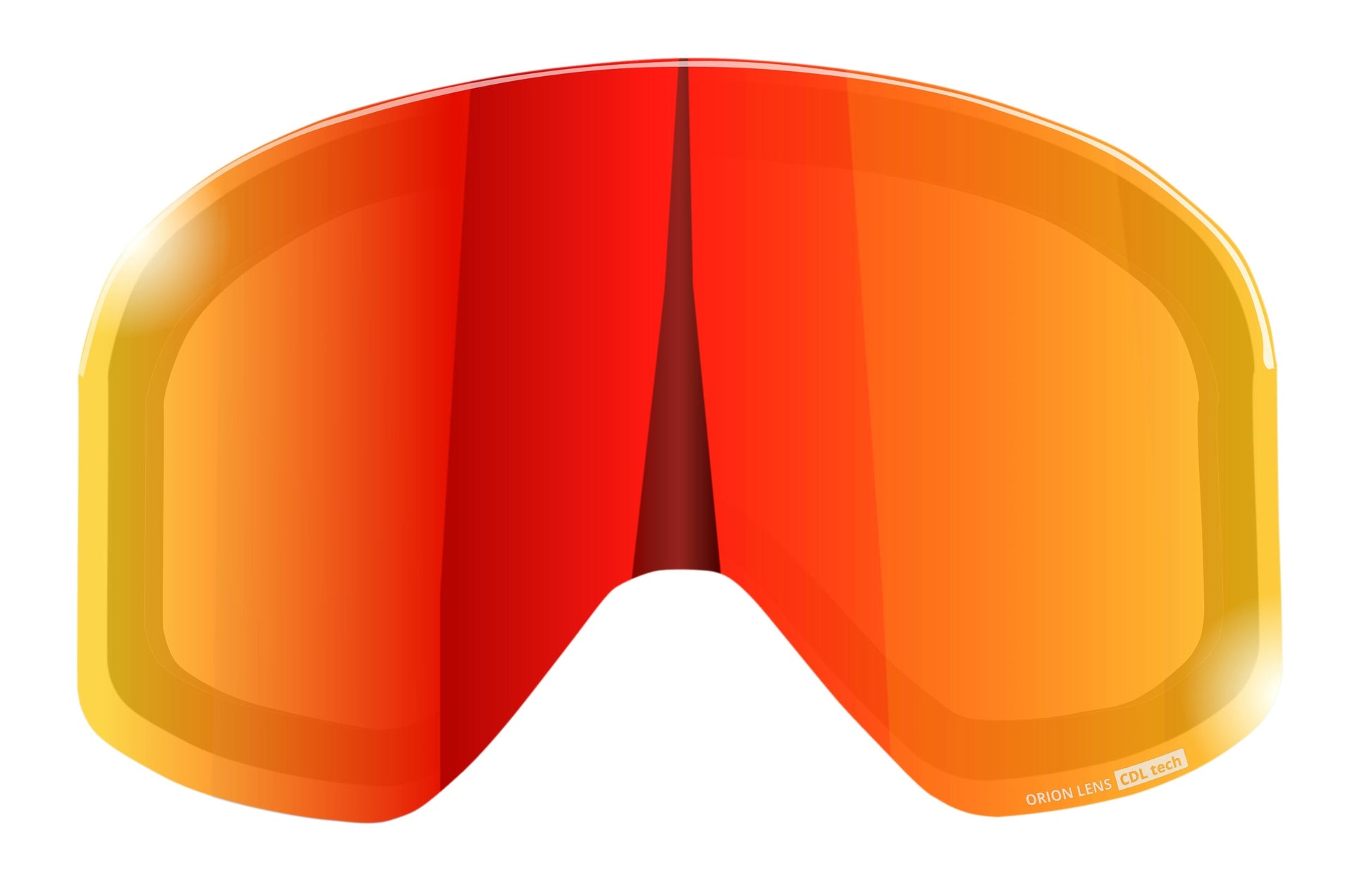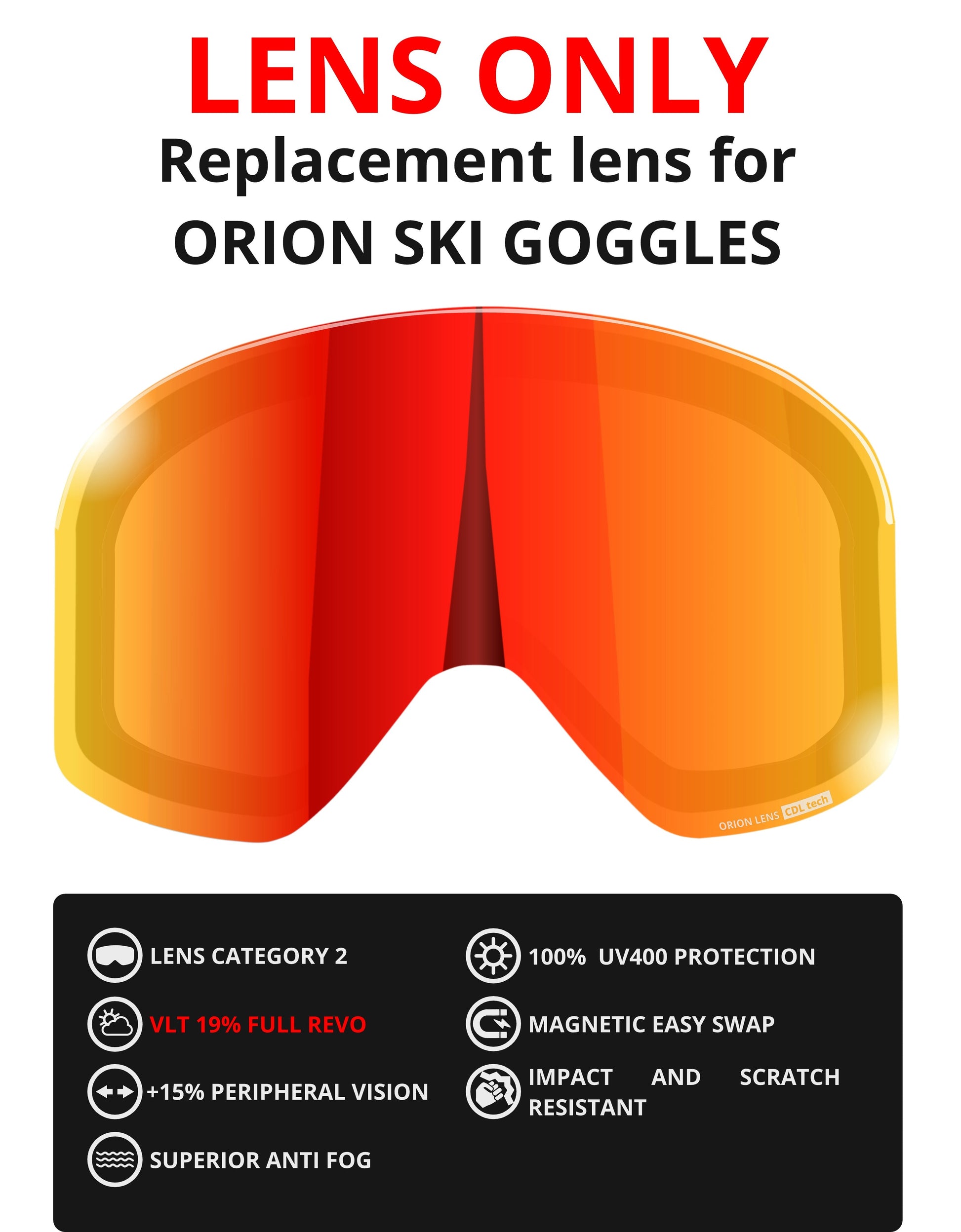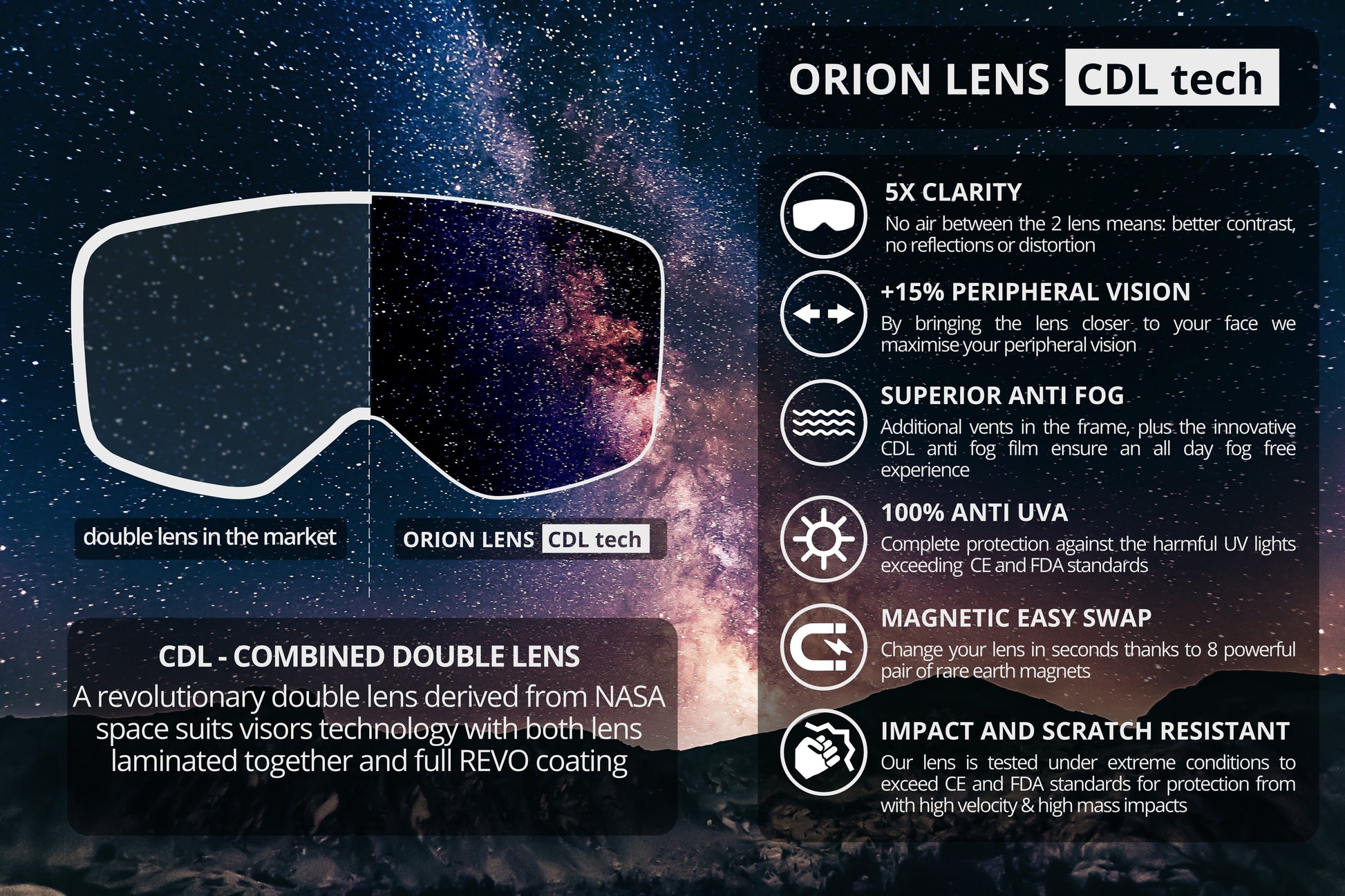6fiftyfive
LENS ONLY - FULL REVO replacement lens for 6fiftyfive Orion ski goggles for men and women - VLT 19% - Fire Red
LENS ONLY - FULL REVO replacement lens for 6fiftyfive Orion ski goggles for men and women - VLT 19% - Fire Red
REPLACEMENT LENS ONLY
Couldn't load pickup availability
Change your lens in seconds
Change your lens in seconds
no more struggling to get your lens swapped for different light conditions. 8 pairs of N45 rare earth magnets allow easy and fast lens switching while holding your lens in place. Personalize your ski goggles with the original 6fiftyfive spare lenses: different colours and VLT (Visible Light Transmittance)
Nearly indestructible
Nearly indestructible
6fiftyfive ski goggles are made to last: the frame is made of strong and flexible Thermo-Plastic Urethane (TPU) and the lens is a shatterproof ultra strong poly-carbonate to ensure your new ski goggles hold up in the most extreme outdoor conditions.
Universal and OTG Compatible
Universal and OTG Compatible
6fiftyfive Orion Ski Goggles are 8.27" wide and 3.74" tall. The extra long and wide high-density elastic strap with silicone anti-slip strips on the back make them universally compatible and ensure your ski goggles stay in place. The OTG design allows you to wear your glasses (up to 5.3" wide and 1.90" tall) under your new ski goggles.
Comfort
Comfort
The high density, triple-layer hot pressed cotton foam is like silk on your skin and ensures you are comfortable and warm protecting you against the elements. The extra vents on the frame help the airflow through the goggles prevent steaming up.
VLT - visible light transmission
VLT - visible light transmission
Cloudy to stormy days. The worst the weather the better this lens works.
Share
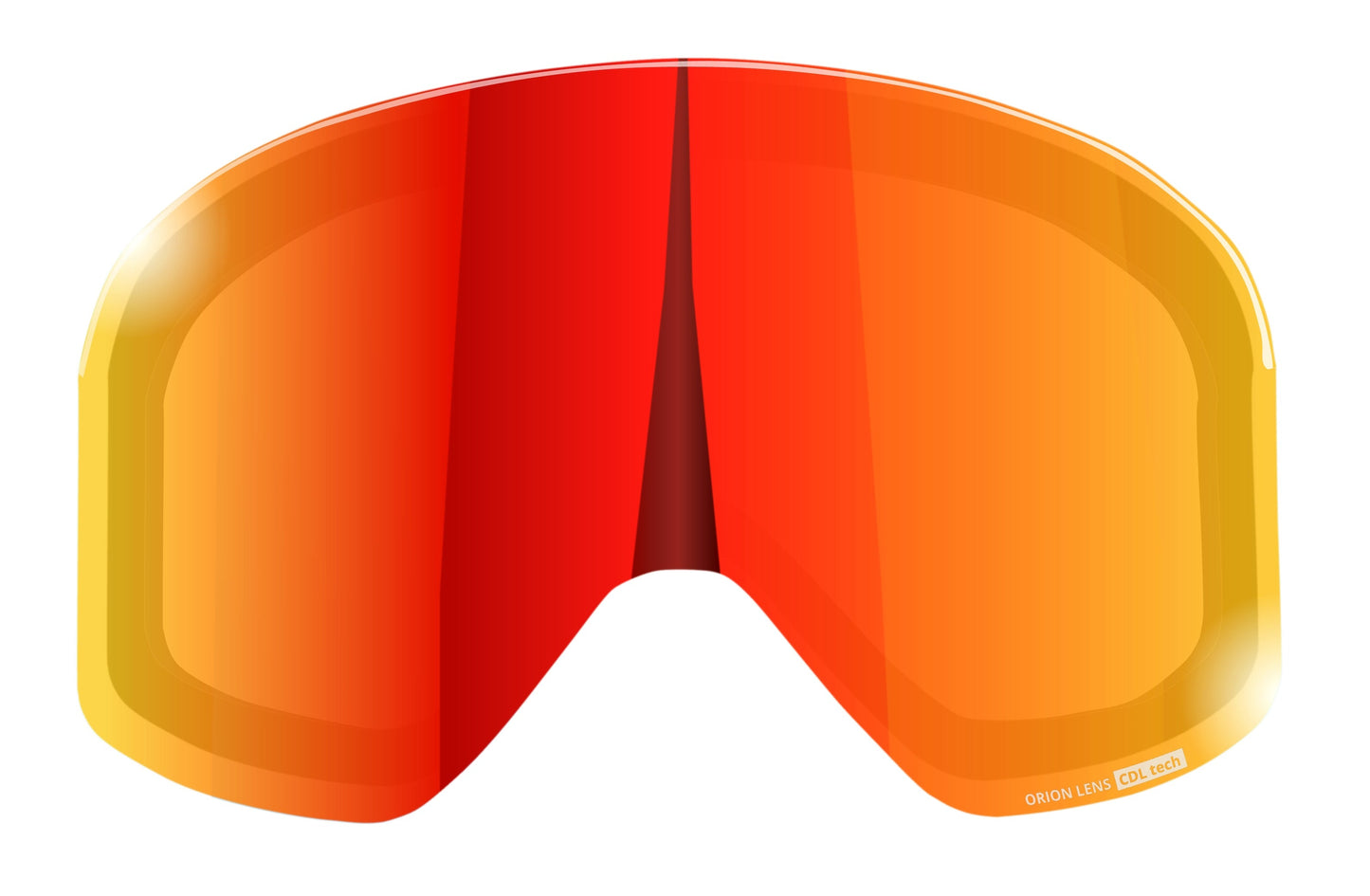
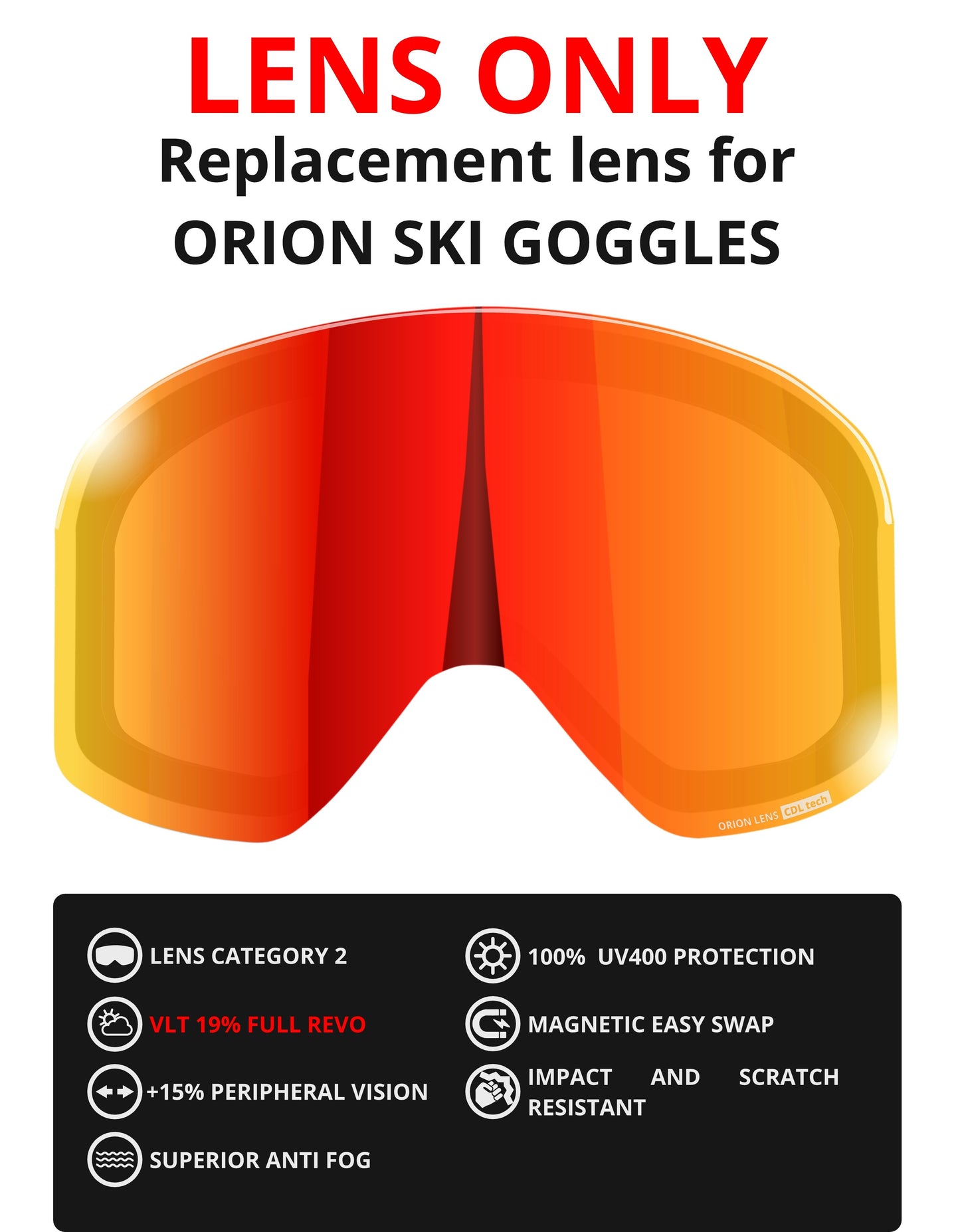
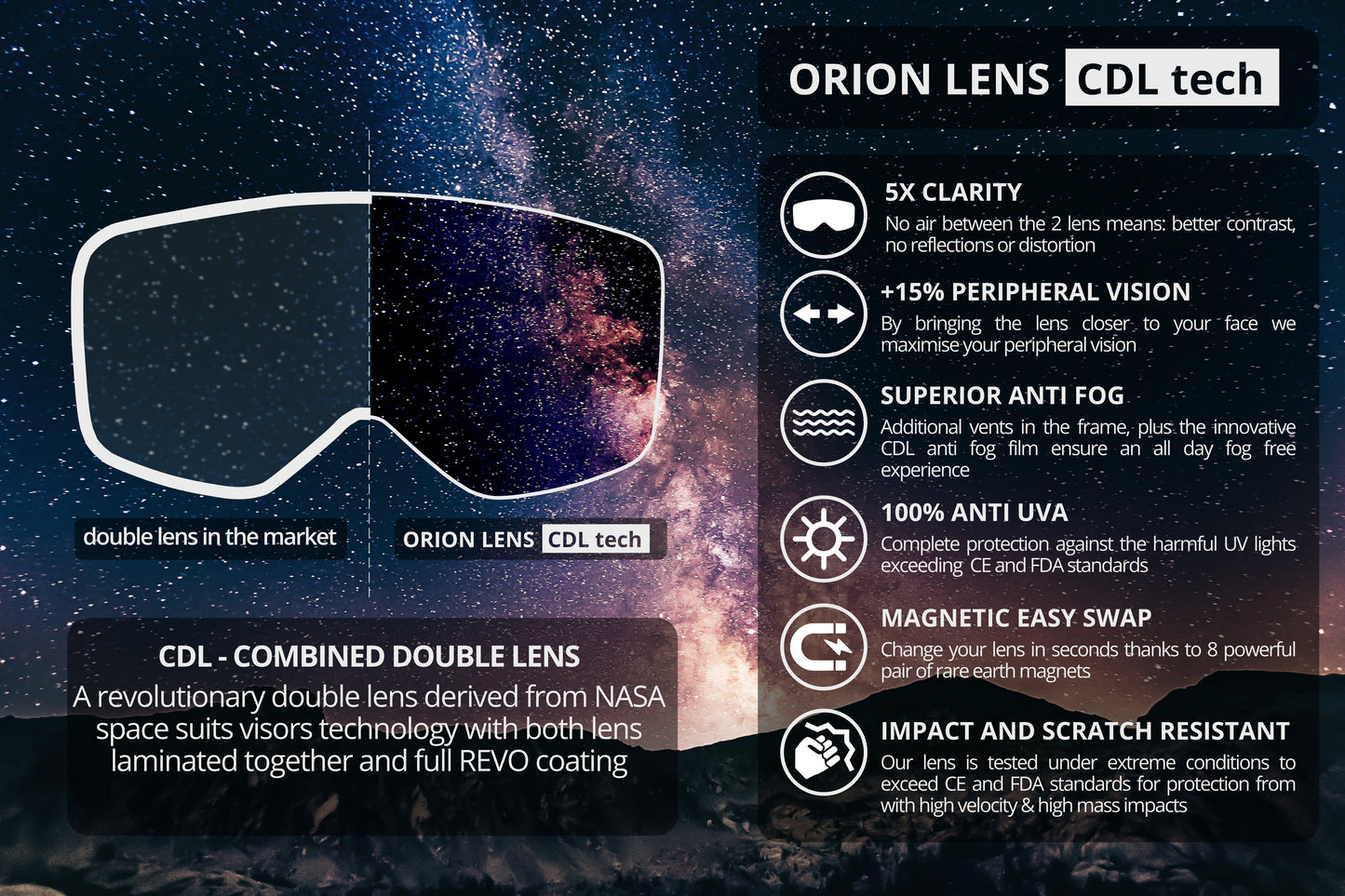
Designed by our team of engineers and ski instructors for the best experience in the snow. All 6fiftyfive Orion ski goggles have an innovative multilayer lens technology that gives you 5X Better Clarity and 3X Improved Anti-fogging, compared to normal double lens ski goggles.
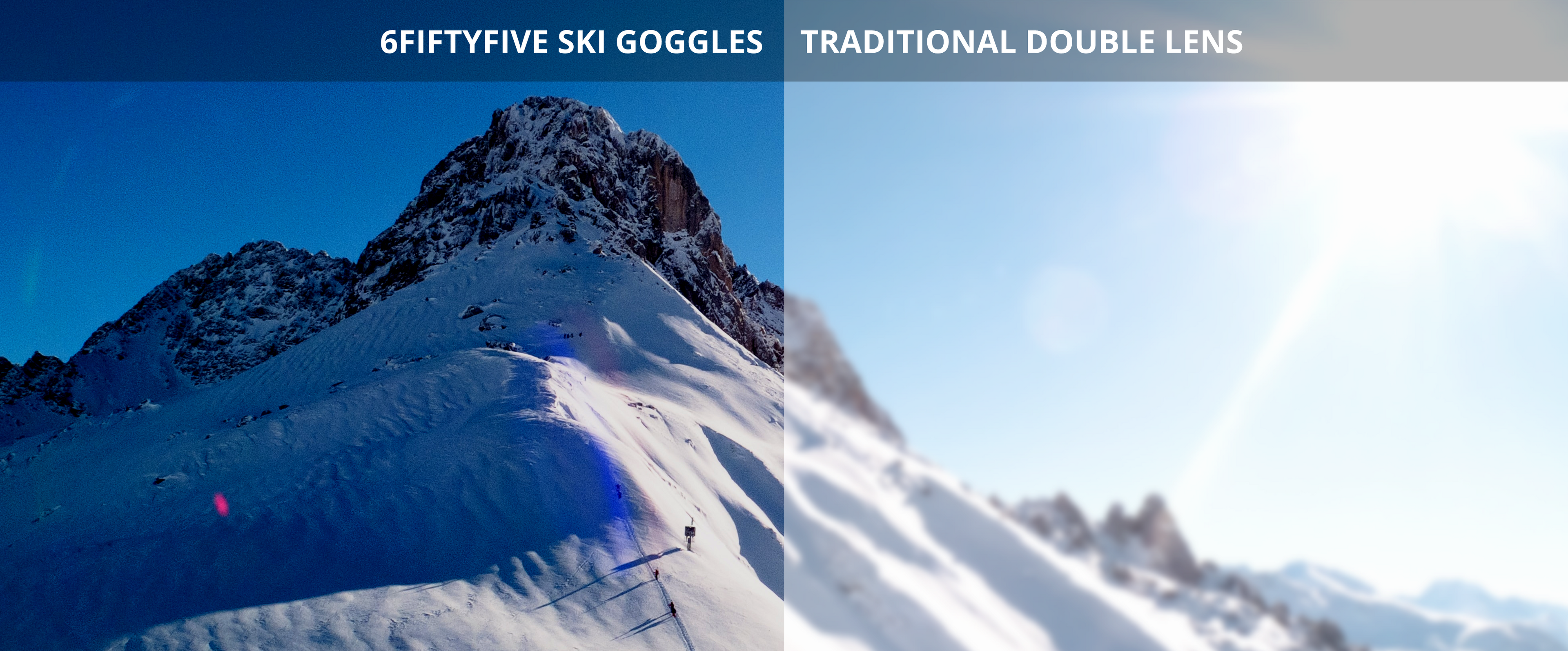
View in HD with 6fiftyfive Ski Goggles
5X clarity + 3X anti fogging compared to normal double lens ski goggles
Multilayer lens for better clarity and anti fogging
-
Double lens ski goggles are made of two lenses, one dark outside, one clear inside. Between the two lenses there is a small air gap. This allows to keep the inner lens at a higher temperature than the one outside, reducing the risk of fogging. In our ski goggles this is achieved through several layers of plastic material in a single, thicker, multilayer lens. An analogy can be made with the old double windows of the houses in the 80s (the double lens masks) in comparison with the multilayer windows of today (our ski goggles). The result is better anti-fog, better contrast and durability.
-
The technology
- the different layers of plastic are more efficient than the air gap in increasing the temperature in the inner part of the lens, reducing the risk of fogging
- The space between the two lenses in double lens masks over time fills with impurities and cannot be cleaned. In ours this problem does not exist
- The 2 lenses create reflected images if you look at the sun, this phenomenon is called ghost images and refractions, The multi-layer construct of our lens does not have this problem.
- Inside our mask we have added an anti-fog film to increase the anti-fog capacity (a thin layer of transparent plastic), the double lenses usually have an anti-fog spray applied in the inner lens (you can see if they have a transparent plastic film inside that must be removed before first use). the spray is much more delicate and deteriorates over time
- The exterior of our lens has a coating called full revo. Many high level ski goggles (Oakley, Smith) have the same coating in their lenses. It allows to accentuate the contrasts to better see the shadows on the track and avoid bumps or holes
-
The result
- increased clarity: 5X compared to traditional lenses
- improved anti-fog: 3X compared to traditional lenses
- augmented contrast and extended durability
- increased view field +25% compared to traditional lenses of the same size
- reduced glares: -40% compared to traditional lenses
